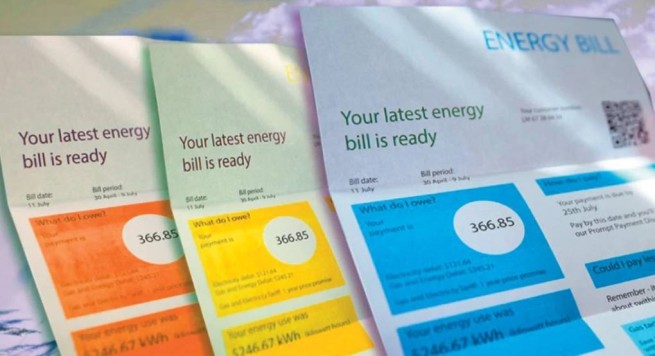Consumers will have to make their choice in favor of new “colored” tariffs, due to changes in electricity prices, which will come into force on January 1, 2024.
Until the beginning of December, as the Consumer Institute points out, suppliers must notify of any changes that occur. If no changes have been made to the contract with the consumer, the supplier is not obliged to inform about this.
Therefore, if the contract with the consumer expires or has already expiredit will automatically be transferred to green sliding tariff. The latter will be valid for 1 year, that is, until the end of 2024. This does not mean that the consumer is obliged to follow it. A citizen will be able to change it, deciding that this is not the option he needs. The interested party can use the page R.A.E. or e-katanalotis page to compare prices and offers. You should be very careful about the offers of providers.
Advice for consumers
- You should be aware that any additional charges are prohibited if they choose to receive a paper bill, i.e. receiving a notice at home (rather than on a cell phone).
- You should make your choice in terms of the biggest “bait” that companies are now using – this discount for punctual payers (έκπτωση συνέπειας).
- Do not be tempted by very large “interesting offers”, since they can only be valid for… 1 first month (carefully read the contract with the electricity supplier). Given the possibility of sliding prices, any misleading representation that “we have given you the best price” should not influence a consumer’s judgment.
- At sliding tariff, the consumer is not protected from rising electricity prices.
- On new bills, consumers will see that there will be a link to Web site R.A.E. and e-katanalotis, and Qcode will also be indicated. There you will be able to check the fees that the supplier is charging the consumer in relation to competing offers or companies. If this link does not exist, it practically means that this type of pricing has been verified by RAE and is out of scope. At this point the consumer should be especially careful. According to INKA (Institute for Consumer Research), it is good if consumers cooperate with recognized companieswhich has nothing to do with the cost of electricity, but also with the general services offered by the supplier, such as information and customer protection.
1. Blue accounts with a fixed fee
Now we will have a blue electricity tariff, which will be fixed. This will be an agreement between the consumer and the supplier for a certain period of time with a fixed price, regardless of the price that electricity will have on the energy exchange. Offering a flat rate is the most expensive, since the consumer is guaranteed not to see exorbitantly inflated bills.
2. Invoices with sliding (green) payment, different per month
Those who have not chosen a provider will be included in this tariff. Those consumers whose contract expires in 2024 and have not chosen a specific offer. Thus, the price for electricity will be variable and will be announced on the RAE website, from where the consumer can see what price will be billed per month. Each month a different price will be published depending on stock market fluctuations.
3. Yellow invoices with mixed expenses
This is essentially a sliding tariff, which, however, will vary depending on the offers that the consumer can choose according to what interests him.
4. Orange tariffs exclusively for consumers with smart meters
In this tariff, the consumer had to install a smart meter (να έχει τοποθετήσει έξυπνο μετρητή στο ρολόι του).
Fluctuations in electricity tariffs are expected with the inclusion of adjustment provisions
The adjustment provision was a complex way to calculate the final cost of electricity production. The model we have in Greece is that 100% of production goes through the electricity exchange. Thus, using this mathematical formula, it was calculated based on the deviation of the final cost with respect to the cost of raw materials.
We will have ups and downs of tariffs will continue, note in Ινστιτούτο Καταναλωτών, because the pricing trend and structure of the wholesale electricity market remains the same in Greece. However, the new invoices will not have a separate amount calculated with the adjustment provision included, but will calculate cost if the adjustment provision is included. The essence of the calculation method is changing, it is not something else, we will still have variations.
Subsidies will be provided exclusively to vulnerable households
The big question, representatives continue to explain ΙΝΚΑ, concerns what will happen in the event (as was the case in early 2023) if there will be a very large increase in natural gas pricesWhat will lead to a reduction in the cost of electricity production. There may be consumers who now have a competitive tariff with current normal prices.
The very high prices we saw 2 years ago were compensated by horizontal subsidies from the state. But there is no such possibility nowand according to the central selection of the commission we will have tough economic policy, and any subsidies will be given, but not horizontally, as was the case beforewhen the consumer saw it on their bill.
It will be automatically provided only some vulnerable social groups. Thus, high-payers may lose if they choose a flat rate, but they may gain if prices fluctuate widely.
Consumers can connect with every day Νέο ΙΝΚΑ, as well as other consumer associations throughout Greece, to receive advice and guidance on any issue they may have or to file a complaint. Complaints can also be submitted as follows: RAEand to the Ministry of Development.







More Stories
Digital Currencies: Global Control or New Opportunities? What's Behind the Introduction of Digital Money
BRICS + ACEAN: A New Era of World Currencies
How much does a square meter of housing cost in the Cyclades